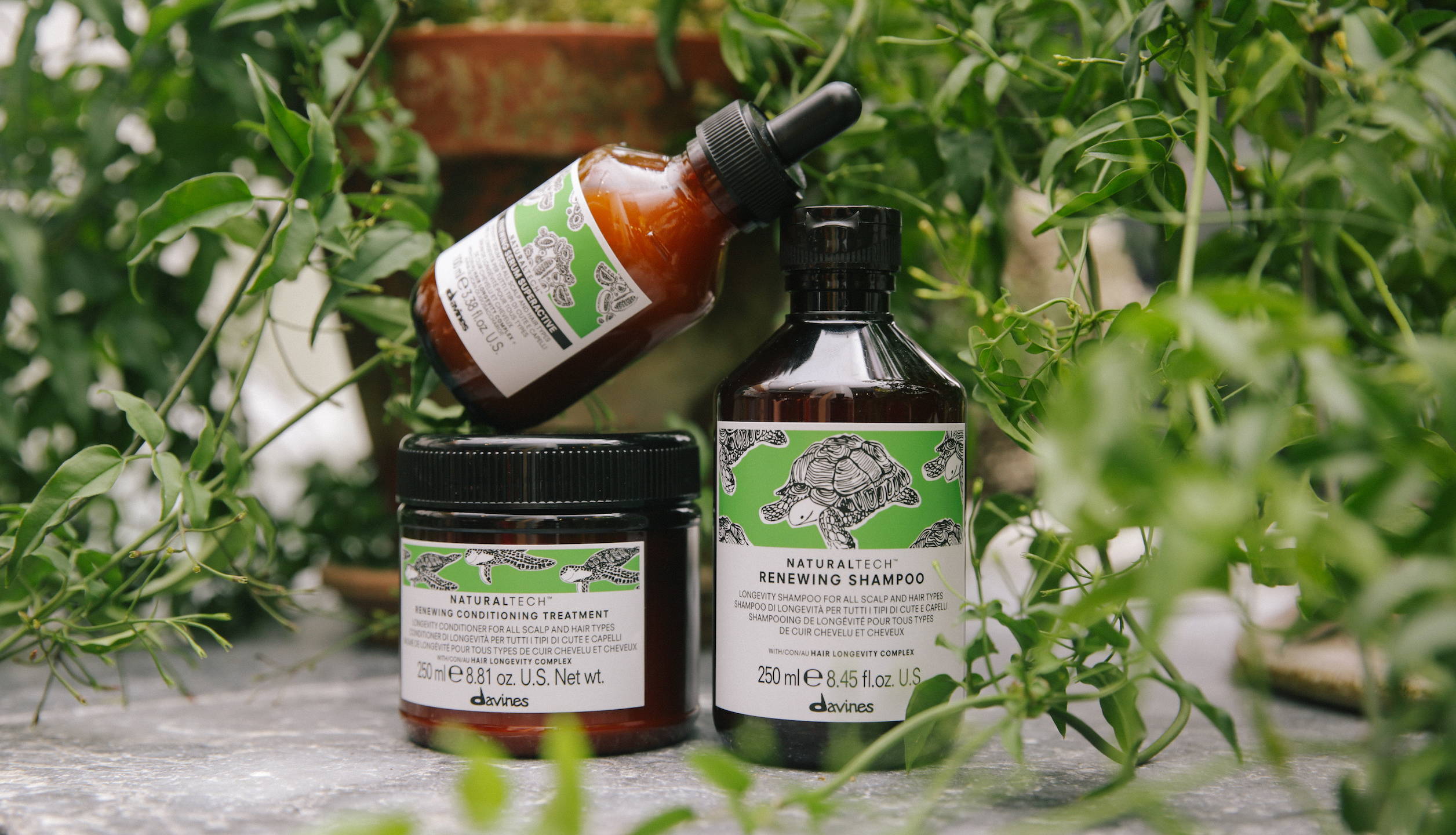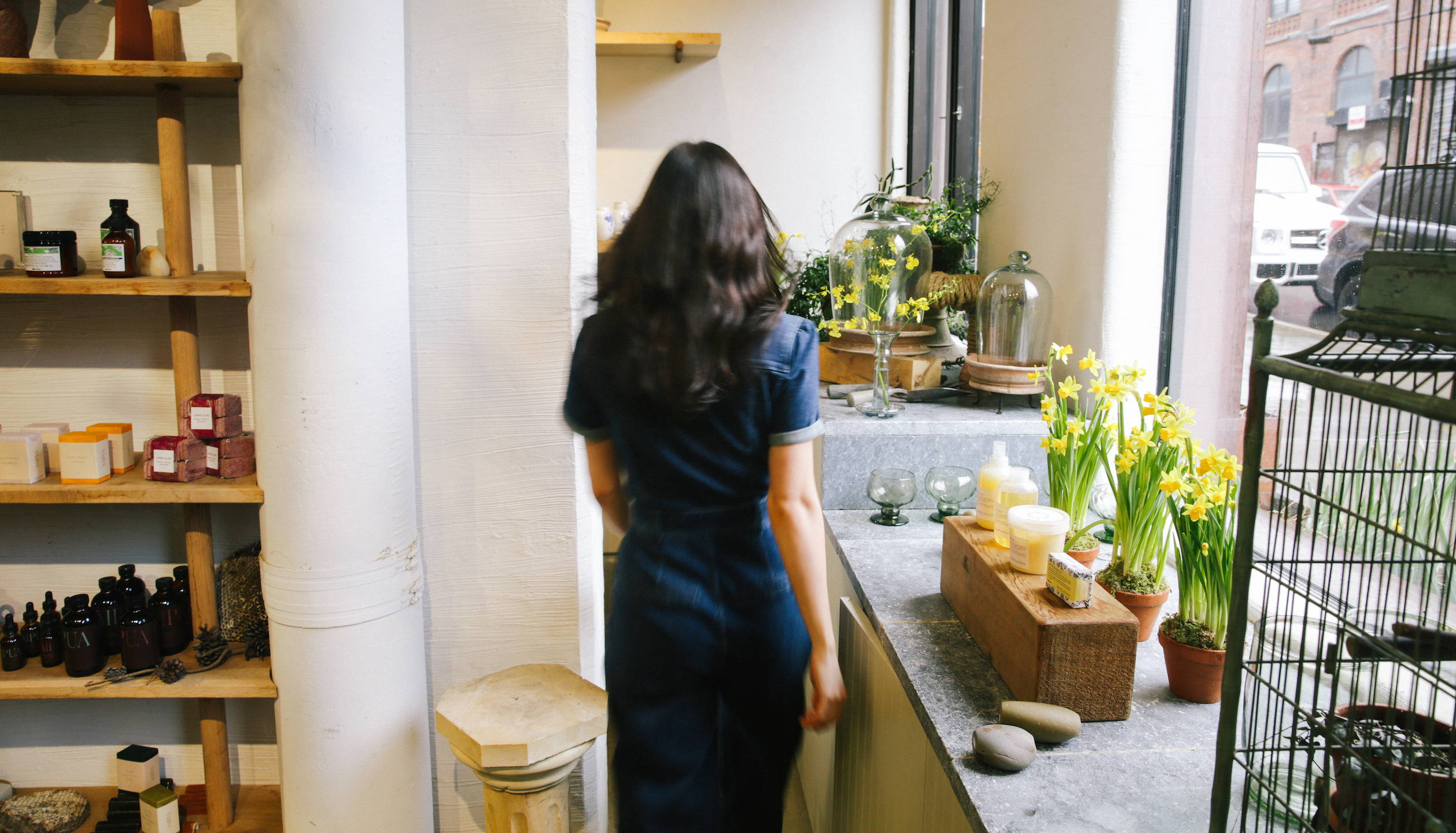Free Carbon Neutral Shipping On Orders $75+, Plus Free Samples!
Buy Now and Pay Later in 4-interest free installments with Klarna
In the same way your skincare routine needs moisture, so does your hair care routine. Dry hair is limp and lifeless and can lead to frustrations like split ends, frizz, breakage and even hindered hair growth. If your mane is frizzy, lacking in shape, and hopelessly dry, there’s only one fix. And that’s by adding moisture. If you’re on a mission to rescue dry hair you’ve come to the right place. We’re telling you how to moisturize your hair — including everything you need to know for strong, shiny, healthy hair, ahead!
Several factors contribute to dry hair, and understanding what they are is the first step to fixing it. Hair strands require a balance of natural oils to stay hydrated, but factors like excessive washing, exposure to harsh weather conditions, and the use of certain styling products can strip away these essential oils, leaving you with frizzy hair. These are the most common causes of dry hair.
The tight curl pattern of natural hair hinders the natural oils in the scalp from easily making their way down the hair shaft. Curly hair also has a bent cuticle layer that tends to lose moisture more rapidly than straighter strands, making this hair type genetically predisposed to becoming dry.
Sulfates are cleansing agents often found in shampoos. But they’re extremely harsh and can strip the hair of moisture. Even with a sulfate-free shampoo, over-washing can zap the moisture from your hair.
Hair has a hard time withstanding the heat of flat irons, curlers, and blow dryers. The more you use these hot tools to style, the more likely you’re drying out your hair. Have a few air dry hairstyles on hand and use a deep conditioner regularly.
Another similarity between your skin and your hair is their susceptibility to UV ray damage. Direct heat from the sun can cause moisture loss in your hair. Not only do UV rays dry out your hair, but they can also affect its ability to retain moisture.

Humidity can be a naturally curly-haired girl’s worst nightmare, but at the end of the day, your hair needs it. When the humidity isn’t high enough (because of climate or indoor conditions like artificial heat) it can dry out your hair.
A lack of humidity isn’t the only weather issue that can dry out your hair. Heavy winds cause the natural moisture in your hair to evaporate faster than usual.
Just like overusing your hot tools, chemically treating your hair over time can create dry and brittle hair. This includes chemical processes like bleaching and straightening.
Porosity is your hair’s ability to absorb and retain moisture. This affects how moisture passes in and out of the outermost layer of your hair, known as the cuticle. Hair porosity is generally categorized into three types: low porosity (cuticles that are close together), medium porosity (cuticles that are less tightly bound and high porosity (cuticles that are more widely spaced). The more porous your hair, the more prone it will be to dryness, and breakage.
Start with a high-quality moisturizing shampoo and conditioner for your hair type and look for products with natural oils like argan, coconut, or jojoba oil. These provide deep hydration without weighing down your hair. These tips will help you with nourishing and hydrating each strand.
What you eat directly affects the health of your hair. For healthy, shiny hair, nothing beats foods with omega-3 fatty acids, protein, antioxidants, B vitamins and iron. These nourish your scalp and give you healthy hair.
Hot water strips the moisture from your strands, so keep it lukewarm when you wash. Finish with a blast of cold water when rinsing out your conditioner. This seals your hair’s cuticles and the pores in your scalp, locking in moisture, and adding a boost of shine.
If you have dry hair it’s important to use moisturizing products for your hair type. It’s also important not to over wash your hair, as this rids your hair and scalp of its natural oils. Try to limit wash-days to three times a week and on the days you don’t use a hydrating shampoo, use dry shampoo to absorb oil buildup.
A hair mask is a deeply hydrating hair moisturizer. Moisturizing masks work by delivering a concentrated dose of powerfully hydrating ingredients deep into your scalp. This ensures that they fully soak in. Apply a deep conditioning hair mask once a week.
Fine hair is usually the driest at its ends so focus your application of conditioner on those dry areas. The roots of fine hair tend to get oily more quickly than thick or natural hair. Use a leave-in conditioner on the ends of your hair where your hair needs moisture the most.
Healthy hair starts with a healthy scalp. And that means treating your scalp with the same nourishing ingredients you’re using on your strands. A moisturized scalp is like a blank canvas allowing any ingredients you lather on after, to work better. If you have an overtly dry scalp that’s irritated and flaky, consult a dermatologist.
Just like every other part of your body, your hair needs protection from the sun. Wear a hat if you plan to spend time in the sun and look for hair products that contain SPF to protect your hair and scalp from the sun’s damaging UV rays.

If you’re thinking of lightening your strands, balayage highlights are a lot gentler than all-over hair color (and a lot easier to maintain). If your hair is dry ask your hairstylist for balayage or partial highlights instead of an all-over dye job.
Hair oils contain rich, hydrating ingredients like shea butter, coconut oil, argan oil and castor oil. Use an anti-frizz oil on dry hair to tame frizz or to damp hair to add manageability and a glossy finish.
If you absolutely must use hot tools and hair dryers, try to keep the temperature of your tool below 400 degrees and always coat your hair with a heat protectant.
Brushing wet hair is one of the worst things you can do for your hair if it’s dry. Bristles can tug, break, and damage already fragile strands. Use a wide tooth comb, to detangle knots before washing while your hair is still dry.
Using a boar bristle brush helps distribute the oils from your scalp, or sebum, down to the end of the hair shaft. By coating each hair strand with a very, very small amount of sebum, a boar bristle brush nourishes dry hair and adds loads of shine.
The answer to most beauty woes (and your overall health and wellness) is usually to drink more water. And your hair health is no different. Make sure you’re drinking enough water to hydrate your body from the inside out.
Protect your dry strands while you sleep with a silk pillowcase. Your hair glides against silk, while it clings to a cotton pillowcase. This creates friction, leading to more dryness and breakage.
Seal the hair cuticle with a coating of protein to eliminate frizz, and add softness and shine. Regular use of a leave-in treatment will make dry or coarse hair smoother and more manageable.
Hair butter is a blend of oils and unrefined butter that acts as a hair moisturizer to seal and protect your hair from dryness and breakage. Apply a deeply moisturizing butter to your ends to keep them nourished, soft, and hydrated.
The more you can keep those tresses in check by trimming off the damage, the less likely they are to become dry and brittle. Regular trims keep your hair healthy and strong.
When you wear your hair loose, it rubs against your clothing creating friction and thus creating frizz. Styling your hair in braids, twists, topknots, and buns will keep your ends protected and less prone to dryness and breakage.
Hydrated hair is healthy hair. Give your lifeless locks an SOS with our tips sure to fix frizz, mend brittle ends, and heal breakage for good! And remember to use only the highest quality moisturizing hair care products, like the ones from Davines.
by Jaclyn LaBadia, featured contributor
Laisser un commentaire
Les commentaires sont approuvés avant leur publication.